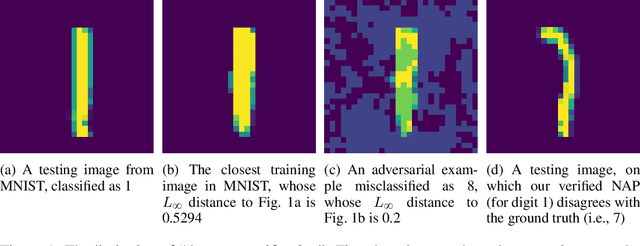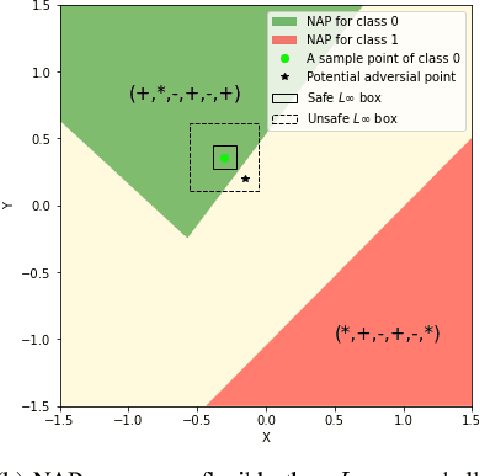Arie Gurfinkel
Toward Reliable Neural Specifications
Nov 14, 2022



Abstract:Having reliable specifications is an unavoidable challenge in achieving verifiable correctness, robustness, and interpretability of AI systems. Existing specifications for neural networks are in the paradigm of data as specification. That is, the local neighborhood centering around a reference input is considered to be correct (or robust). However, our empirical study shows that such a specification is extremely overfitted since usually no data points from the testing set lie in the certified region of the reference input, making them impractical for real-world applications. We propose a new family of specifications called neural representation as specification, which uses the intrinsic information of neural networks - neural activation patterns (NAP), rather than input data to specify the correctness and/or robustness of neural network predictions. We present a simple statistical approach to mining dominant neural activation patterns. We analyze NAPs from a statistical point of view and find that a single NAP can cover a large number of training and testing data points whereas ad hoc data-as-specification only covers the given reference data point. To show the effectiveness of discovered NAPs, we formally verify several important properties, such as various types of misclassifications will never happen for a given NAP, and there is no-ambiguity between different NAPs. We show that by using NAP, we can verify the prediction of the entire input space, while still recalling 84% of the data. Thus, we argue that using NAPs is a more reliable and extensible specification for neural network verification.
 Add to Chrome
Add to Chrome Add to Firefox
Add to Firefox Add to Edge
Add to Edge